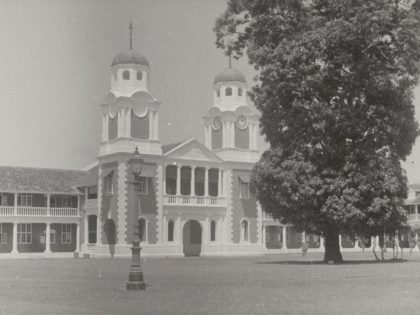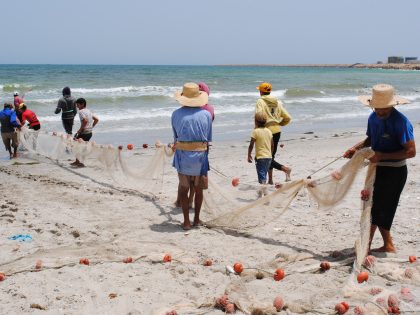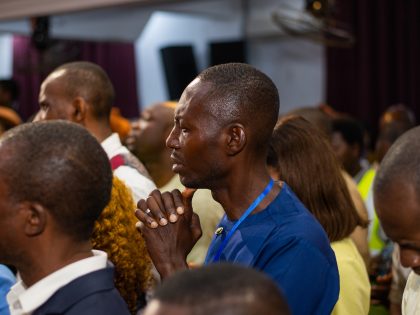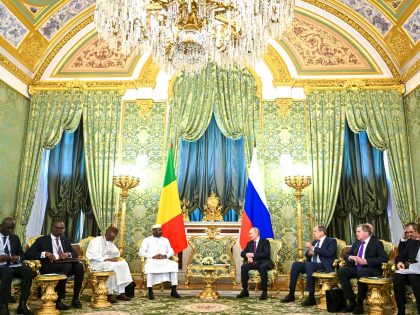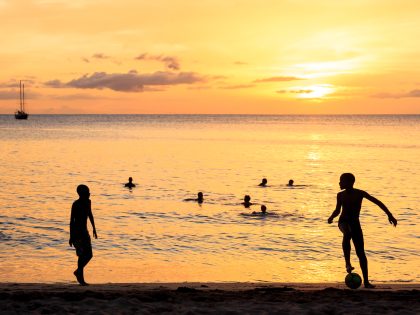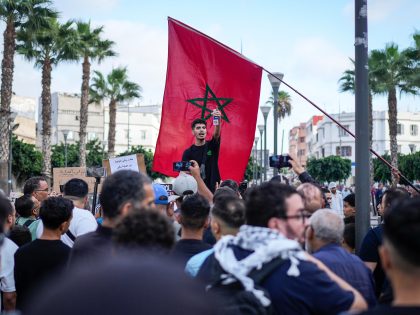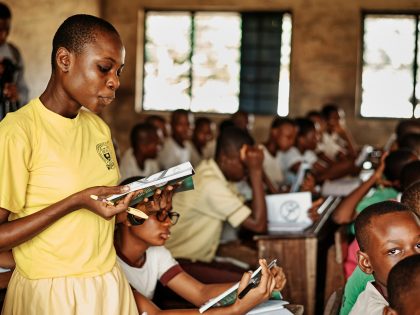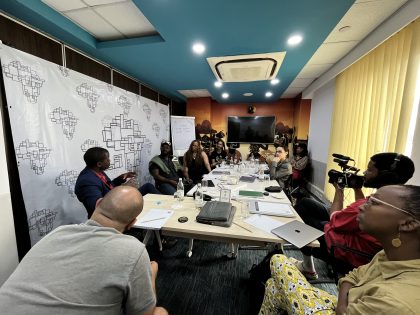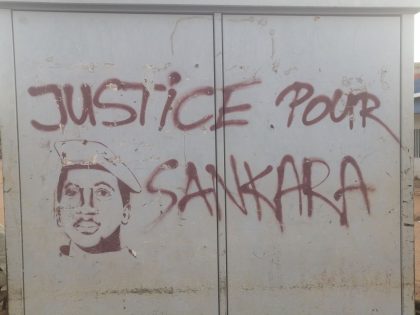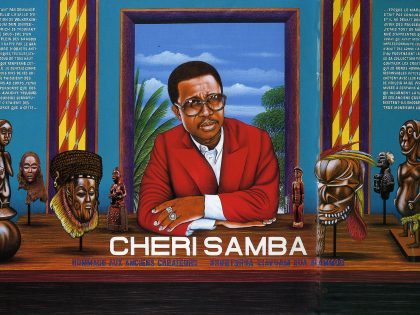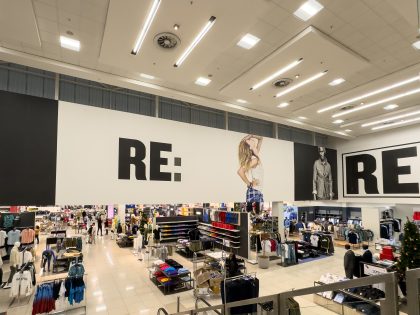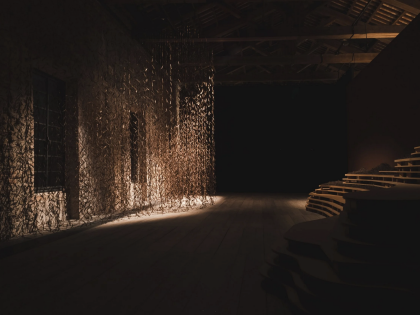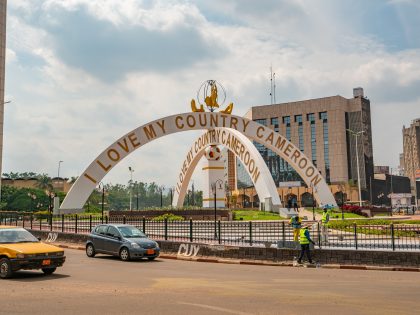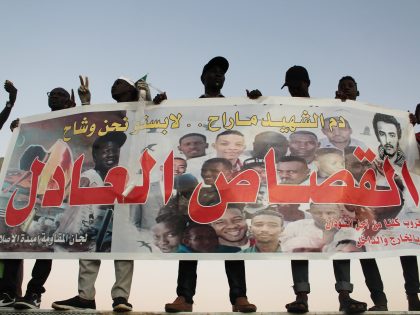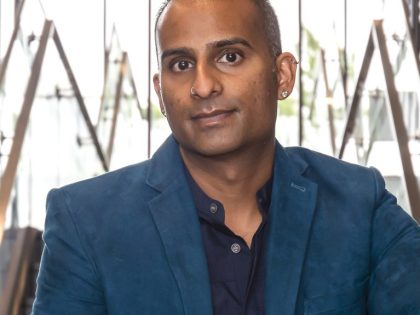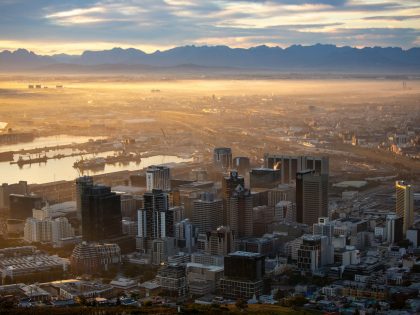How France will eat itself
Police brutality mediates the relationship between French citizens of African descent and public and political institutions.

Still from Matheiu Kassovitz' La Haine (1995).
The film La Haine became an instant classic on its release in 1995 for its livid account of police abuse as a structural form of violence in France. The film remains a poignant depiction of the lingering problem of police brutality in the banlieues (suburbs) of Paris, where most of the city’s poorer African- and Arab-descended populations live. The film’s 24-hour narrative follows the daily lives of three young Parisians, Vinz, Said, and Hubert, after one of their friends, Abdel Ichaha, is brutalized by the police and rendered comatose. Mathieu Kassovitz, the director, was inspired by the true events of the death in police custody of a young French-Zairian, Makome M’Bowole, in 1993. M’Bowole was handcuffed to a radiator and shot at point blank range.
Twenty-two years later, on Feb. 2, 2017, at 5 pm, in Aulnay-sous-Bois, a mutli-ethnic suburb in north-west of Paris, Théodore L, alias Théo, a 22-year-old French-Congolese community worker, feared for his life when a group of four policemen brutally sodomized him. He recalls that he was on his way to see one of his friends when he found himself face to face with the officers from la brigade spécialisée de terrain (BST – a special unit dedicated to field policing in impoverished urban zones) who were routinely checking identity papers during a stop-and-frisk. While Paris police say alleged rape was an “accident,” Theo suffered severe anal injuries and was diagnosed with a 10cm deep anal tear.
Theo’s rape joins a long list of similar cases of police brutality directed at the French youth of African descent. On October 18, 1980, Lahouari Ben Mohamed, a 17-year-old boy, was shot in the head by a policeman during a stop-and-search operation in Marseille. On December 6, 1986, Malik Oussekine died a day after he was physically brutalized by two plainclothes policemen in Paris. Between November 5-29, 1991, Ahmed Selmouni was physically and sexually abused during his arrest in Seine-Saint-Denis, a suburb in the northeast of Paris. On October 27, 2005, Zyed Benna and Bouna Traoré, 17 and 15 years respectively, were electrocuted in the Paris suburb of Clichy-sous-Bois after police chased them as they were their way home from a football match. Their death led to the outbreak of the urban riots of 2005.
Eleven year after those riots, which marked a turning point in French modern history, police brutality continues to mediate the relationship between French citizens of African descent and public and political institutions. Their conditions continue to worsen.
On July 19, 2016, Adama Traoré, a 24-year-old French-Malian, was found dead in police custody in Beaumont-sur-Oise, a small town north of Paris. The unexplained circumstances of his death have been linked to serious allegations of a state cover-up and show how the problematic dimension of police brutality in France underscores issues of race and violence that have always shaped French politics. Not only did the local prosecutor falsely declare Traoré’s death to be as a result of a heart attack and a serious blood infection, but also his mother and brother were gassed by the police and the mayor of Beaumont threatened to sue his older sister. Later the same year, two of Adama’s brothers were sentenced to eight- and three-month prison terms in prison, respectively, for threats and violence toward officers.
The ensuing public and media attention following the wide reporting of Theo’s case showed the extent to which the issue of police brutality is a systemic problem.
In an interview on a French talk show, Luc Poignant, a veteran police officer and a spokesperson of a police union, deemed the use of the racial slur “Bamboula” as acceptable when addressing African men. The term is highly-pejorative translating “player of drums” or “dancing N-word.” It was used to described African soldiers in colonial French wars and refers to their perceived naivety, cannibalism, and brutal primitivism.
The attention to the complex relations between French media, the political caste and French people of African descent in Kassovitz’s film still resonates in today. In 1995, the prime minister Alain Juppe set up a compulsory screening for his cabinet. After the 2005 urban riots, the now famous Kassovitz-Sarkozy exchange captured public attention and generated heated debate over police brutality, the role of the politicians and the alienation of minority populations. Kassovitz went further to call Sarkozy, the interior minister at that time, an “irresponsible” politician, comparing him to “a starlet from American Idol” who acted “like a warmonger.”
As Marine Le Pen is likely, I think, to be France’s next president, the looming threat of more violent bloodier urban riots in the wake of other events of police brutality is a reality. She is unapologetically racist, xenophobic, intolerant politician who feeds on problems of unemployment and fragmented multiculturalism to make neofascism mainstream again. The far-right leader ended her campaign by vowing to suspend all legal immigration to France which would save her country from “savage globalization” by putting “native French first.” When asked her opinion about Théo’s incident, she insisted on backing the police unconditionally. She called protesters against police violence “scum.”
La Haine ends with the tragical scene of shocking violence where Hubert, the rational figure in the movie, uses Vinz’s .44 magnum revolver to avenge the death of the latter by a policeman. As the closing credits roll, we hear Hubert’s voice retells the old story of a person that, while falling from a fifty-story building, keeps reassuring himself by repeating “So far so good … so far so good … so far so good.” The election of France’s next president will not only risk shuttering the dreams of social cohesion but it will widen the already explosive political and social gap.
